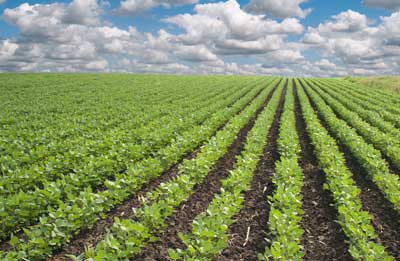
Spring is finally here for the majority of the state and field work is getting underway. As we enter the spring planting window, seeding rate questions for both corn and soybean become common. What is the right seeding rate is a question that can vary depending on field conditions, disease history, and a whole host of other factors. However, when it comes to soybean populations, university research suggests achieving a final stand of 100,000 plants per acre to achieve 100 percent yield potential. So what is the right seeding rate to get 100,000 plants per acre and what should you consider?
Soybean seeding rates of 125,000 to 140,000 seeds/acre should be adequate in most situations to attain a final net stand of 100,000 plants/acre which research suggest maximizes economic return as well as soybean yield for the majority of acres. Dr. Shawn Conley, Professor and Soybean and Wheat Extension Specialist from the University of Wisconsin, suggests adjusting final plant stands depending on field productivity. If you have a field that is typically lower producing, you should increase seeding rates in order to achieve a final plant stand closer to 140,000. This means you may need to adjust seeding rates higher than 140,000 seeds per acre. Likely in these lower yield fields, seeding rates closer to 160,000 seeds per acre may be necessary. If you are in a field that is higher in productivity consider lowering seeding rates to 125-140,000 seeds per acre to achieve a final plant stand of 100,000 plants per acre.
When pushing populations lower, it is important to use a good quality insecticide and fungicide seed treatment. Lower seeding rates coupled with earlier planting promotes higher yields, but also puts the seeds at risk from early season insects and diseases. New seed treatments that provide protection against SDS and soybean cyst nematodes are also now available and should also be considered if these pathogens have been an issue on your farm. Contact your local FS crop specialist for more information.
Remember soybeans have the ability to adjust branches and pods/plant in regards to plant populations. Higher populations will reduce branching and reduce pods/plant while lower populations will increase branching and pods/plant. This allows the soybean to compensate for lower populations.
Have a great and safe spring.
Tim Berkland serves the FS System as GROWMARK’s strategic agronomy marketing manager.